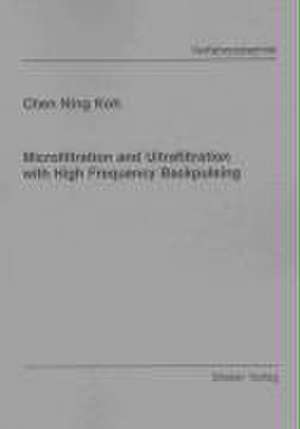Microfiltration and Ultrafiltration with High Frequency Backpulsing
Autor Chen Ning Kohen Limba Engleză Paperback – 30 iun 2009
Preț: 296.02 lei
Nou
Puncte Express: 444
Preț estimativ în valută:
56.68€ • 59.02$ • 47.03£
56.68€ • 59.02$ • 47.03£
Carte indisponibilă temporar
Doresc să fiu notificat când acest titlu va fi disponibil:
Se trimite...
Preluare comenzi: 021 569.72.76
Specificații
ISBN-13: 9783832283186
ISBN-10: 3832283188
Pagini: 288
Ilustrații: 26 farbige Abbildungen
Dimensiuni: 149 x 210 x 19 mm
Greutate: 0.39 kg
Editura: Shaker Verlag
ISBN-10: 3832283188
Pagini: 288
Ilustrații: 26 farbige Abbildungen
Dimensiuni: 149 x 210 x 19 mm
Greutate: 0.39 kg
Editura: Shaker Verlag
